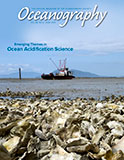Article Abstract
Much of the detailed, incremental knowledge being generated by current scientific research on ocean acidification (OA) does not directly address the needs of decision makers, who are asking broad questions such as: Where will OA harm marine resources next? When will this happen? Who will be affected? And how much will it cost? In this review, we use a series of mainly US-based case studies to explore the needs of local to international-scale groups that are making decisions to address OA concerns. Decisions concerning OA have been made most naturally and easily when information needs were clearly defined and closely aligned with science outputs and initiatives. For decisions requiring more complex information, the process slows dramatically. Decision making about OA is greatly aided (1) when a mixture of specialists participates, including scientists, resource users and managers, and policy and law makers; (2) when goals can be clearly agreed upon at the beginning of the process; (3) when mixed groups of specialists plan and create translational documents explaining the likely outcomes of policy decisions on ecosystems and natural resources; (4) when regional work on OA fits into an existing set of priorities concerning climate or water quality; and (5) when decision making can be reviewed and enhanced.

